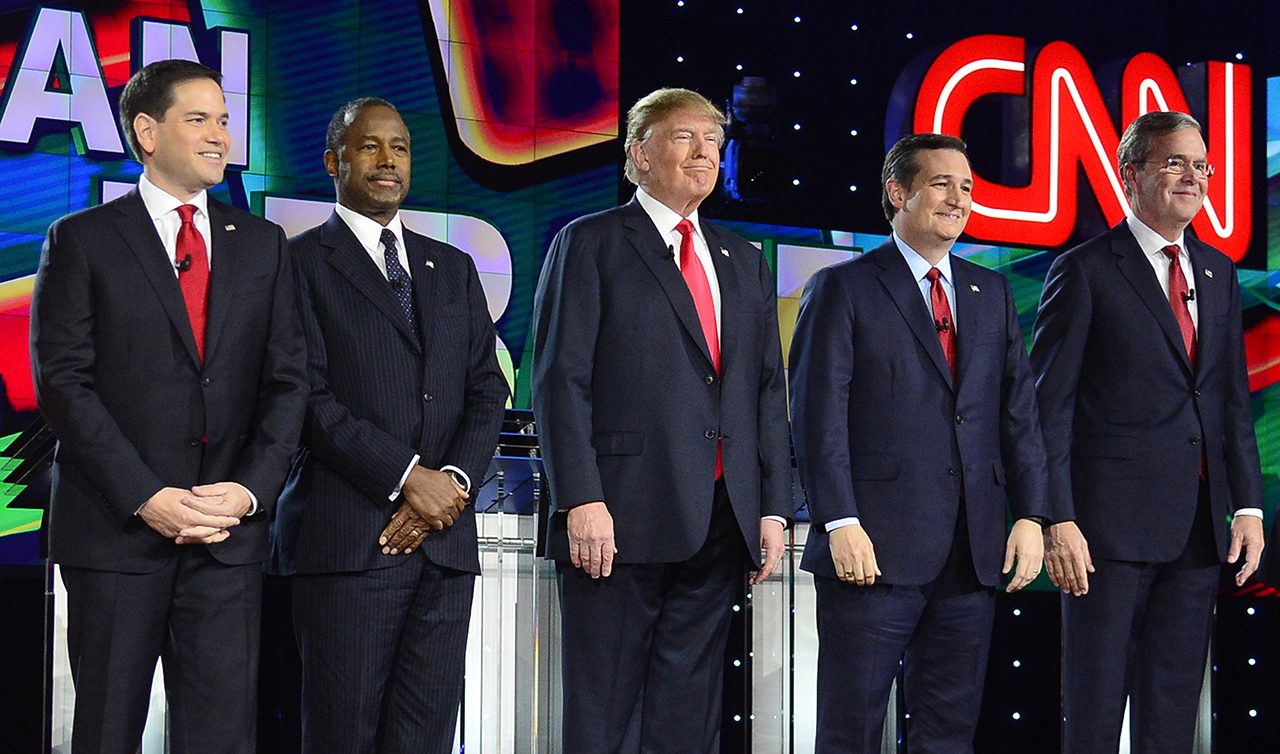SUMMARY
This is AI generated summarization, which may have errors. For context, always refer to the full article.

WASHINGTON DC, USA – Americans elect President Barack Obama’s successor on November 8. But the quirky political process, among the longest in the world, kicks off in earnest on February 1 with the Iowa caucuses.
Presidential terms are 4 years. Obama is barred from running again because he has served the maximum two mandates.
Here is an explanation of the unique US system that leads to Election Day 2016.
The primaries
Primaries – and in some cases caucuses, which are organized by the political parties instead of state governments – are held in the 50 states and in territories including Puerto Rico, and they are the nuts and bolts of the formal process that selects the presidential nominees.
Iowa (February 1) and New Hampshire (February 9) have voted first for decades, and the parties are in informal agreement that those two states, along with Nevada and South Carolina, are the first 4 on the primary calendar.
The primary race is about claiming enough delegates to clinch a party’s nomination. Each state has a number of delegates corresponding to state size; California has far more delegates than relatively small Iowa, for example. Most delegates are bound to candidates based on the primary results.
The Democratic Party requires Democratic delegates be allocated proportionally, while Republicans allow a mix, with states voting later in the process deemed winner-take-all.
Among Democrats, 4,764 delegates are up for grabs, while Republicans have 2,472 delegates for allocation.
Primary season runs from February to June, and the candidate receiving a majority of delegates wins the nomination. In 2012, Republican Mitt Romney crossed that threshold in April. In 2008, Obama was pushed all the way to June.
The conventions
The winning candidates will be officially nominated at their party’s national conventions: July 18-21 in Cleveland for Republicans, and July 25-28 in Philadelphia for Democrats.
These showcases are aimed at galvanizing the party base and rallying the assembled supporters around their nominee in front of millions of Americans watching at home.
Nominees traditionally pick their vice presidential running mates ahead of the conventions. Once the presidential/VP “ticket” becomes official, it is a mad dash to election day, with candidates on a non-stop campaign schedule.
The Democratic and Republican presidential nominees will debate 3 times, in September and October, in televised programs viewed by tens of millions of people. The vice presidential candidates will face off in one debate.
The election
While Election Day this year is November 8 – by law, the Tuesday after the first Monday in November – Americans can vote in some states as early as September, through absentee ballots or in-person early voting.
Perhaps the biggest quirk in the US electoral process is that Americans do not technically elect their president. That is done through the Electoral College, whose functions were enshrined in a constitutional amendment ratified in 1804.
It is comprised of 538 “electors” distributed among the 50 states and the District of Columbia – the nation’s capital Washington, DC.
Presidential hopefuls must win at least 270 Electoral College votes to be elected outright. Each state, and DC, has a minimum of 3 electoral votes.
California has 55 electoral votes, Texas 38, and New York and Florida 29 each, making them the largest states up for grabs.
In the event of a tie, in which each candidate wins 269 electoral votes, the House of Representatives, currently dominated by the Republicans, would be called on to choose the president.
With US voters becoming increasingly polarized, most states are already seen as shoo-ins for either the Democrats or the Republicans.
This means the battleground is a clutch of so-called swing states. In 2016, analysts say roughly 16 states, including Florida, Ohio and Pennsylvania, fall into that category.
On Election Day, it’s winner take all. The candidate who wins the popular vote in each state wins all its Electoral College votes, except in Maine and Nebraska, which use a tiered system.
As a result, the Electoral College has not always reflected the national will. In 2000, Democrat Al Gore won the popular vote, but Republican George W. Bush won 271 Electoral College votes when he was declared the victor in Florida.
Who are the electors? The political parties (or independent candidates) in each state submit to the state’s chief election official a list of individuals pledged to their candidate for president and equal in number to the state’s electoral votes.
The electors meet in their state assemblies after the election to formally elect the country’s next president and vice president.
Obama’s successor will be inaugurated on January 20, 2017 in Washington, traditionally in a ceremony on the US Capitol steps. – Michael Mathes, AFP/Rappler.com
Add a comment
How does this make you feel?
There are no comments yet. Add your comment to start the conversation.